- ABOUT US
- PROGRAM AREAS
- CONSERVATION APPROACH
- EDUCATION
- MULTIMEDIA
Finfish fact sheets aim to maintain healthy fisheries in Micronesia
Takeaway: The Pacific Islands Managed and Protected Area Community (PIMPAC) has developed species fact sheets on 30 finfish species that are common and important fisheries species in Micronesia. This information can help inform management measures to maintain healthy fisheries.
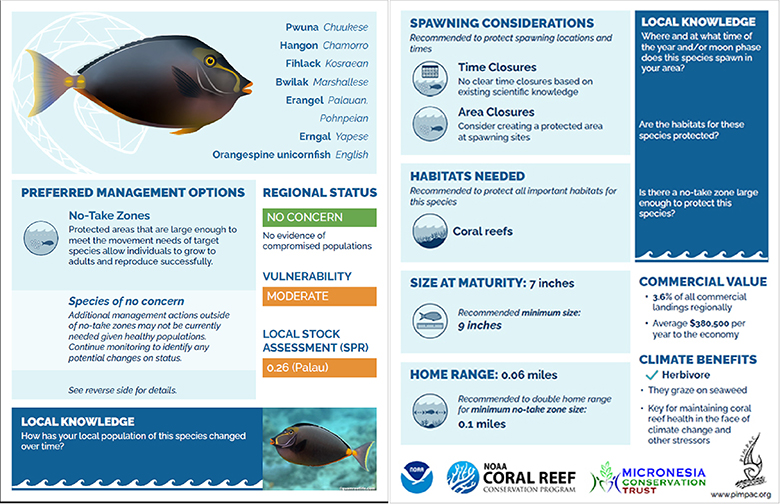
In 2006, the leaders of the Federated States of Micronesia, the Republic of the Marshall Islands, the Republic of Palau, Guam, and the Commonwealth of the Northern Mariana Islands committed to effectively conserve at least 30% of the near-shore marine resources and 20% of the terrestrial resources across Micronesia by 2020, known as the Micronesia Challenge. They reaffirmed and updated their commitment in 2021 to effectively manage at least 50% of near-shore marine resources and 30% of terrestrial resources by 2030. A new objective includes better-integrated fisheries management with marine protected area (MPA) networks. The Pacific Islands Managed and Protected Area Community (PIMPAC) is a long-term capacity-building program and a community of managers collaborating to enhance protected area management in partnership with local communities in the Pacific and has been supporting the Micronesia Challenge goals.
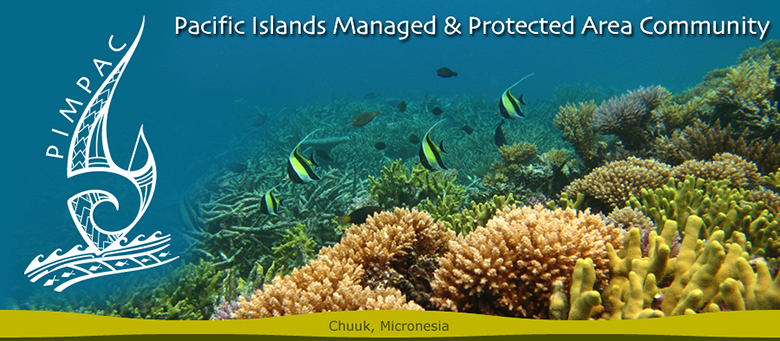
Management partners have recognized that marine no-take zones have not been sufficient to improve many populations of important fisheries species, and additional management measures are needed to maintain healthy fisheries. Through funding from NOAA’s Coral Reef Conservation Program (CRCP) and technical support from the NOAA Fisheries Pacific Islands Regional Office, PIMPAC and Micronesia fisheries management partners developed species fact sheets that include the latest science on key life history information like size at maturity and home range, habitat needs, regional status, and vulnerability to extinction, among others.
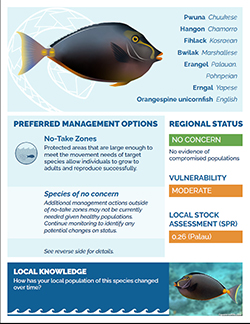
The fact sheets also provide information on commercial value, potential climate benefits of the species, and preferred management options. There are spaces to capture additional local knowledge to complement and help fill in the gaps in the science. These fact sheets were developed to support management decision-making, especially through a participatory community planning process, and will be shared with PIMPAC partners to advance sustainable fisheries management efforts in the Pacific region and progress towards the Micronesia Challenge goals.
The Republic of the Marshall Islands used information similar to what is included in these fact sheets, as well as long-term coral reef monitoring data funded by CRCP, to pass a comprehensive package of new fish harvest regulations in 2020. The Fish Harvest Regulations 2020 bans certain harvesting methods such as spearfishing with SCUBA diving gear and the use of chemicals or explosives based on their impacts on the fish stocks and their habitat. The regulations also call for fish inspectors to regulate new minimum fish size standards to help ensure those species reach reproductive age and can produce young before being removed from the population. PIMPAC provides a venue for the Marshall Islands to share its process and lessons learned with other partners.
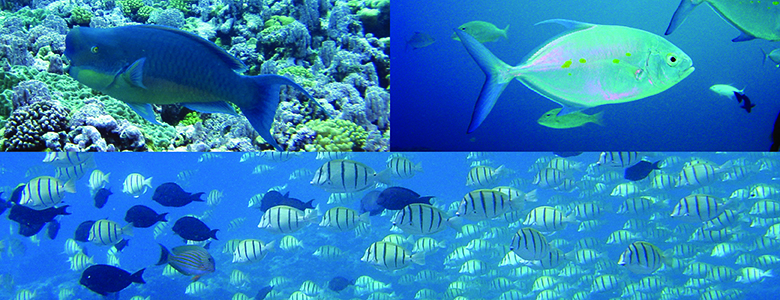
Related Stories and Products
About Us

The NOAA Coral Reef Conservation Program was established in 2000 by the Coral Reef Conservation Act. Headquartered in Silver Spring, Maryland, the program is part of NOAA's Office for Coastal Management.

The Coral Reef Information System (CoRIS) is the program's information portal that provides access to NOAA coral reef data and products.
Work With US
U.S. Coral Reef Task Force
Funding Opportunities
Employment
Fellowship Program
Contracting Assistance
Graphic Identifier
Featured Stories Archive
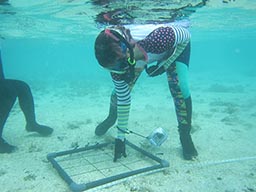
Access the archive of featured stories here...
Feedback
Thank you for visiting NOAA’s Coral Reef Conservation Program online. Please take our website satisfaction survey. We welcome your ideas, comments, and feedback. Questions? Email coralreef@noaa.gov.
Stay Connected
Contact Us
NOAA’s Coral Reef Conservation Program
SSMC4, 10th Floor
1305 East West Highway
Silver Spring, MD 20910
coralreef@noaa.gov
